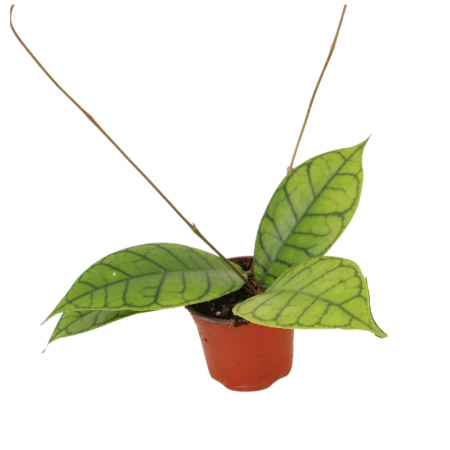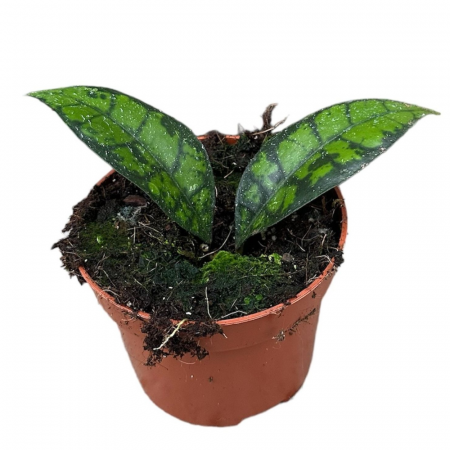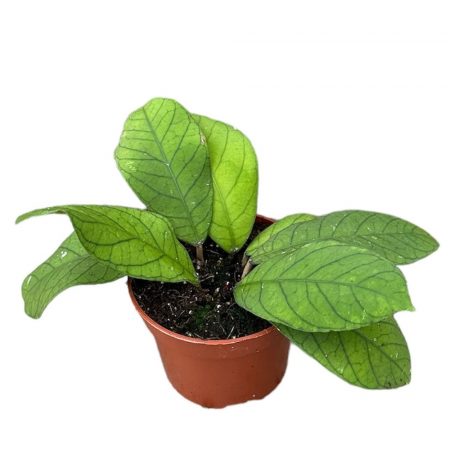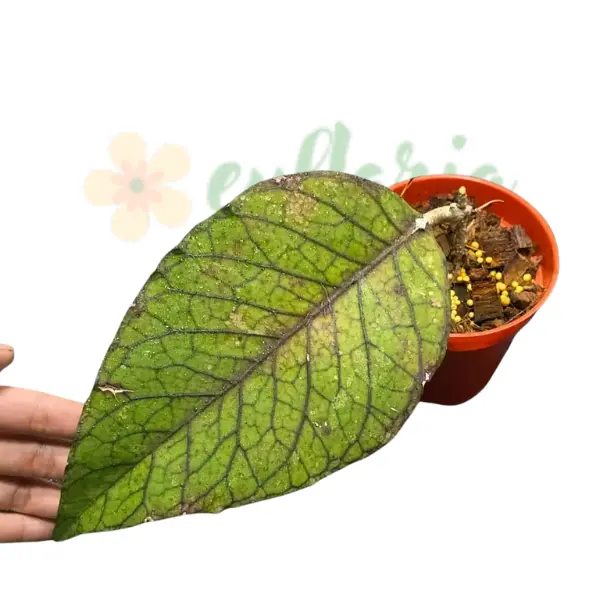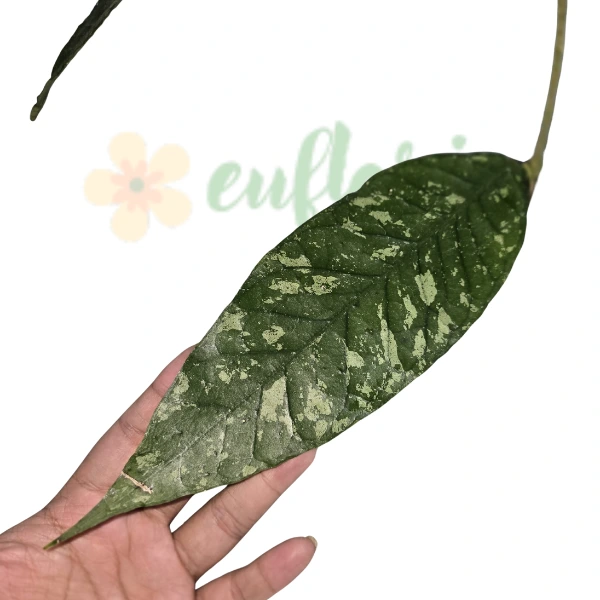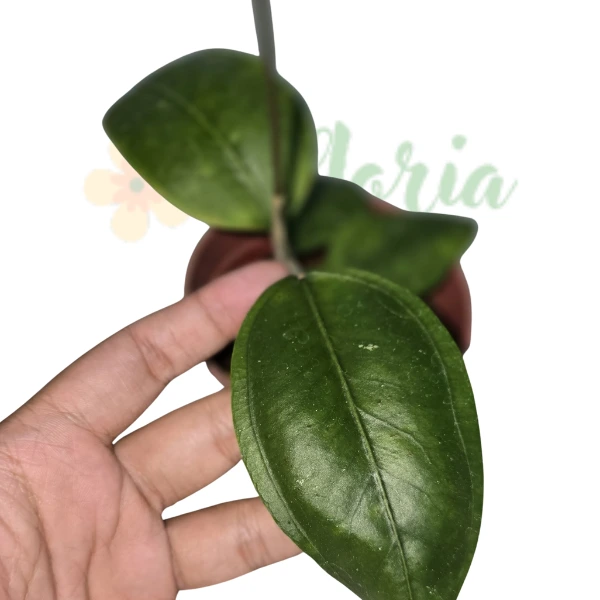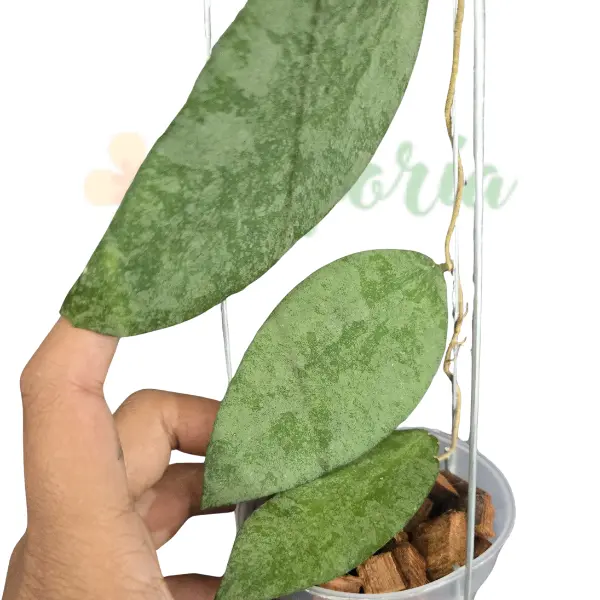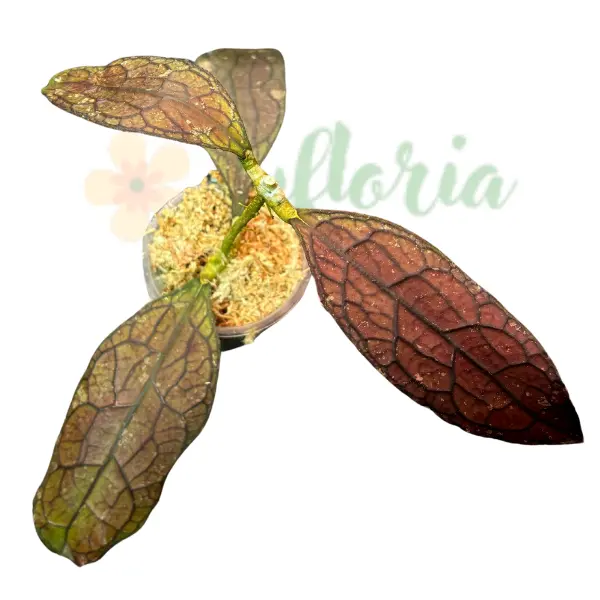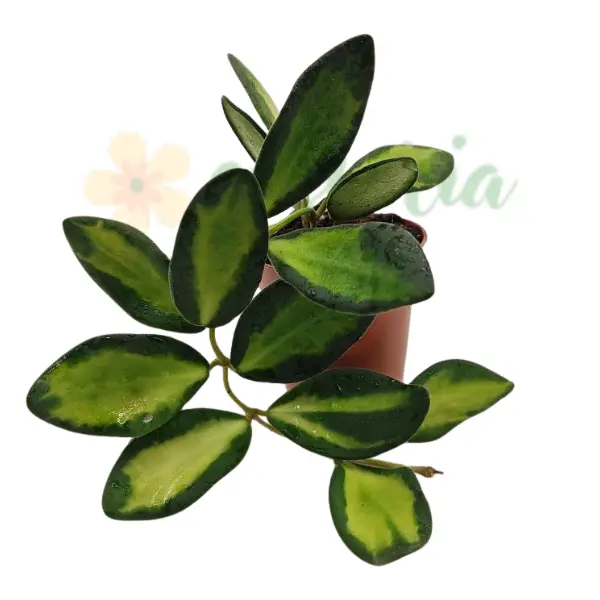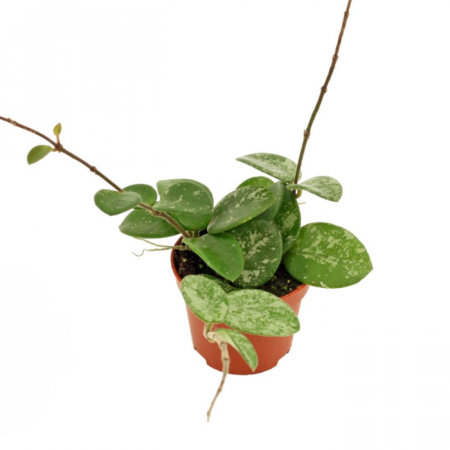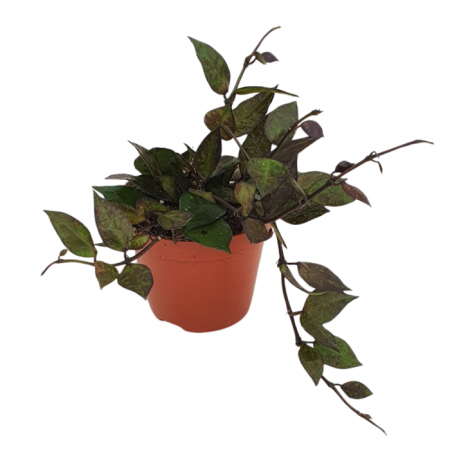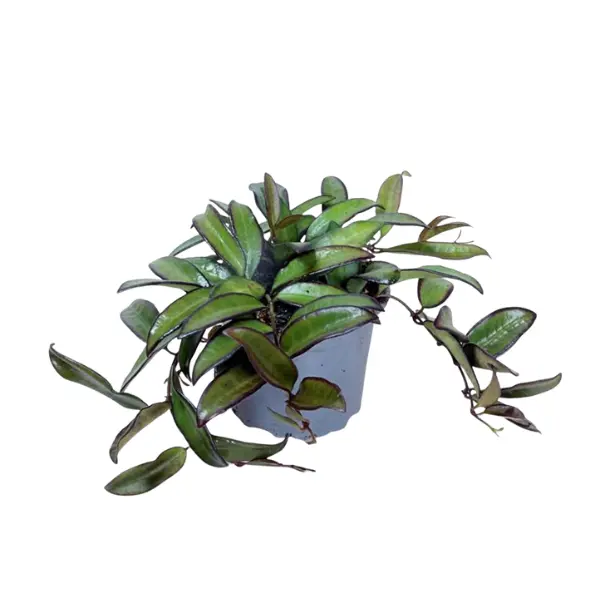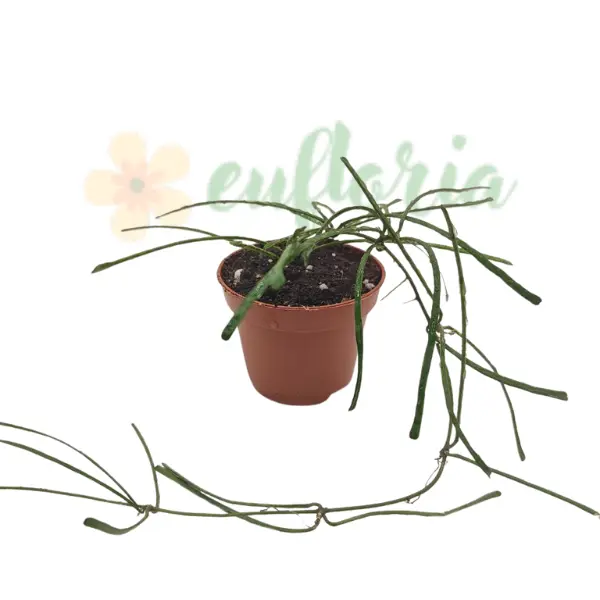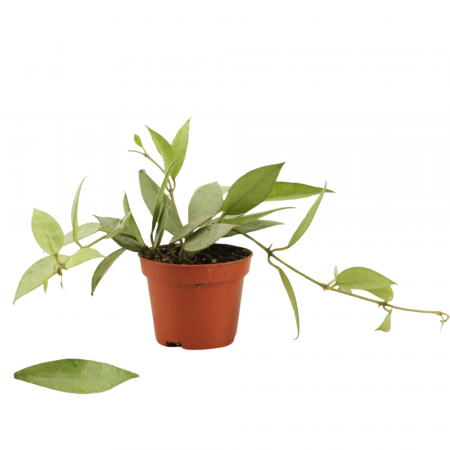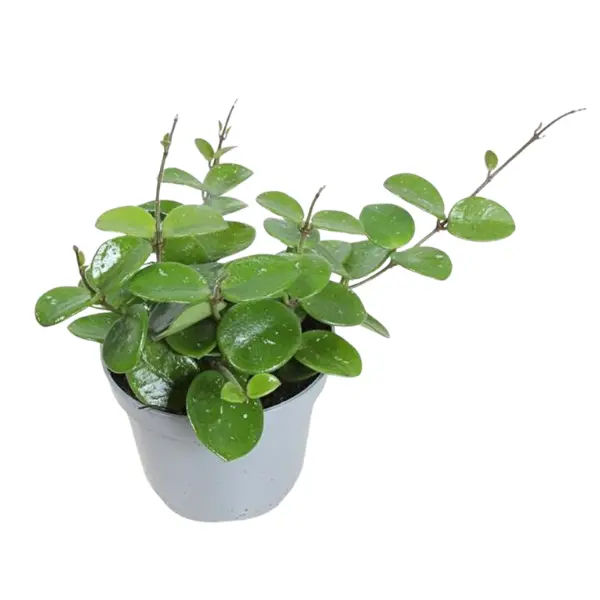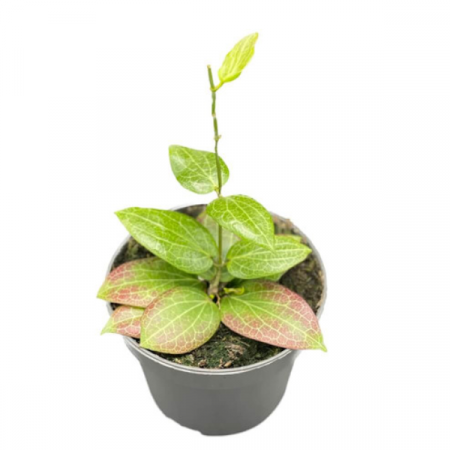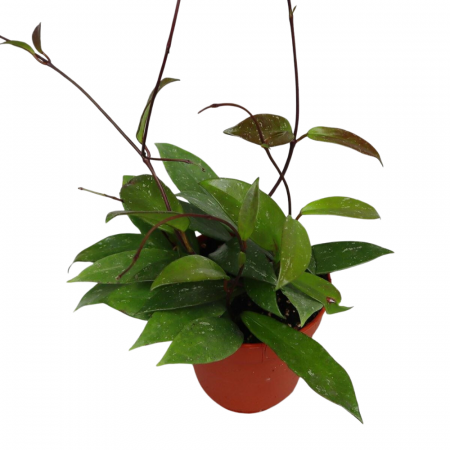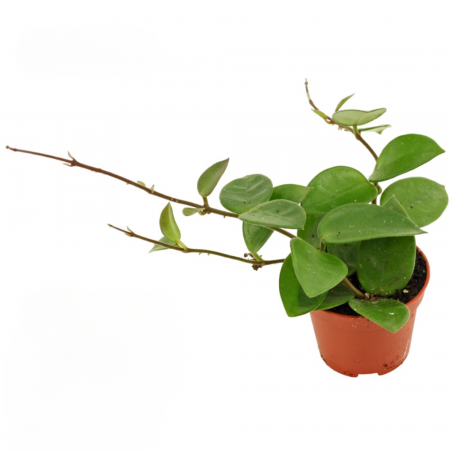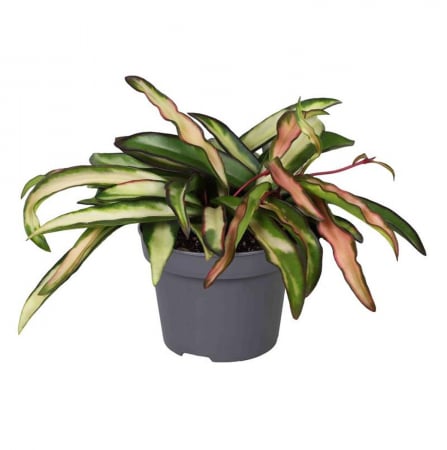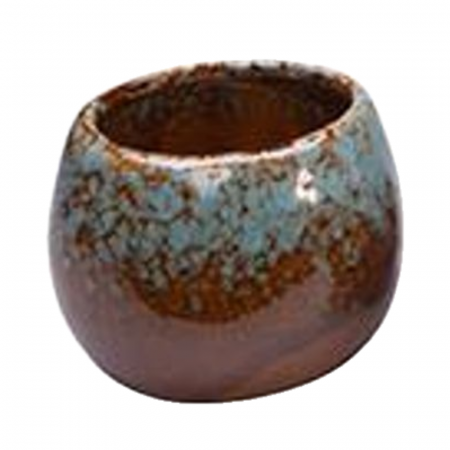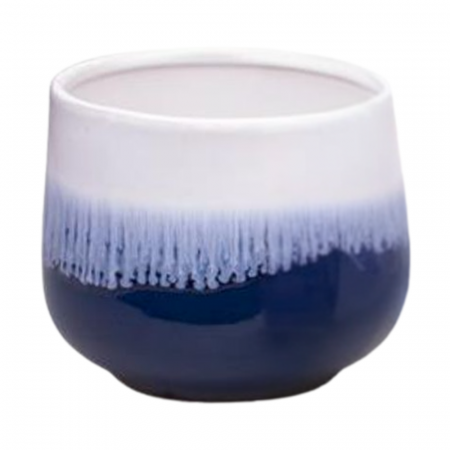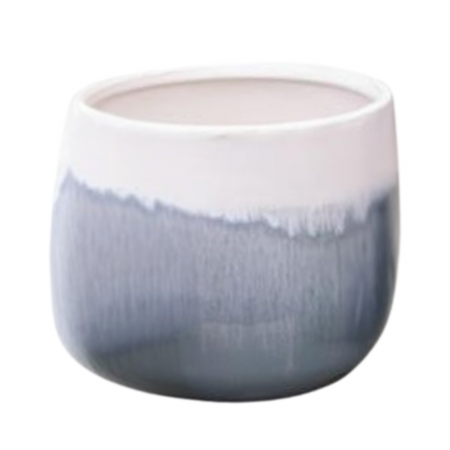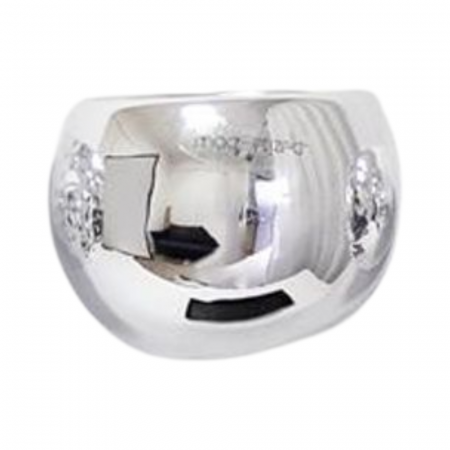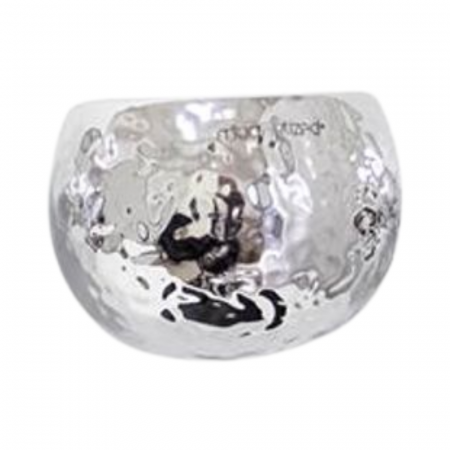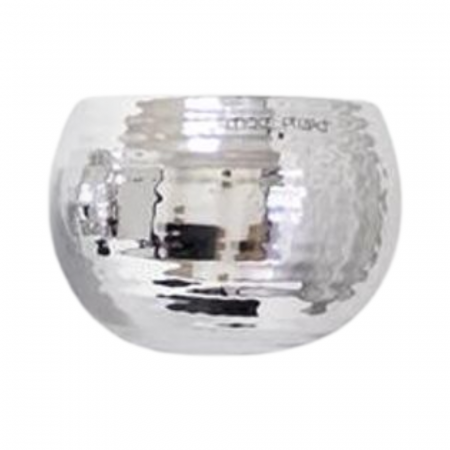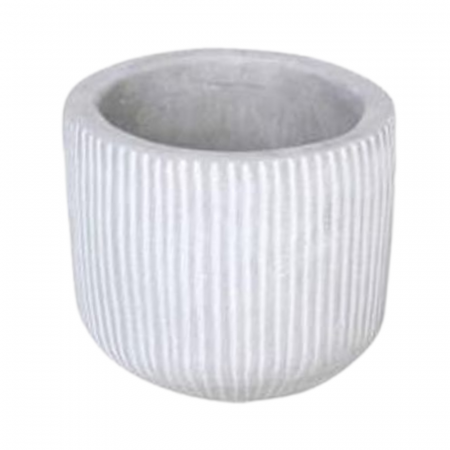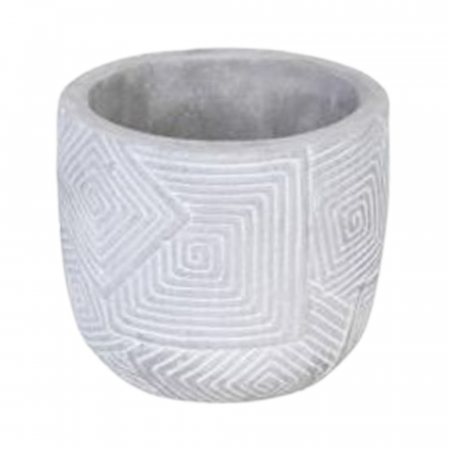Hoya finlaysonii Ø10.5cm
Approx height (including pot): 15 cm
Flowering state: No flowers
Country of origin: Netherlands
- Description
- Characteristics
- Reviews (0)
- FAQ
Hoya finlaysonii - The Tropical Splendor of Painted Leaves
Hoya finlaysonii is a spectacular species of the Apocynaceae family, native to the tropical forests of Malaysia, Southern Thailand and Borneo, where it grows as an epiphyte on the trunks and branches of trees. This plant is primarily cultivated for its absolutely unique and decorative foliage, which transforms any space into a true oasis. tropical.
What makes Hoya finlaysonii truly special is the spectacular pattern of its leaves: a bright light green base, crossed by dark green or almost black veins that create a dramatic and memorable contrast. The leaves have an elongated elliptical shape, can reach 10-15 cm in length, and have a thick, stiff, almost cardboard-like texture, which gives them a sculpted and artistic presence. The edge of the leaves is also outlined with dark green, completing this remarkable botanical picture.
Although grown primarily for the beauty of its leaves, Hoya finlaysonii also produces delicate flowers, organized in spherical umbels of up to 35 small flowers. The flowers have creamy-white corollas that fade towards the tips to shades of purple or maroon, and the corollas are creamy-white. The most charming aspect of the blooms is the sweet cinnamon-and-oak fragrance or the spices they emit, characteristic of the Hoya genus. The flowers appear in spring and summer, but are ephemeral, lasting only 2-3 days - a short but memorable show.
This Hoya has a climbing or trailing habit, making it perfect for hanging baskets, pots on high shelves, or on vertical supports where it can be guided to form dramatic compositions. The stems are woody at the base They can reach 1-2 meters in length in optimal conditions, creating spectacular green cascades of decorative foliage.
Hoya finlaysonii is suitable for collectors who appreciate plants with particularly decorative foliage and for those who want to bring a touch of tropical exoticism to their home. Unlike many other Hoyas, this species requires more consistent humidity of the substrate due to its thinner leaves (compared to other species with very succulent leaves), but it remains a plant relatively easy to care for those with intermediate experience.
In its natural habitat in the humid tropical forests, this plant grows on trees where it receives filtered light, moving air, and constant moisture - conditions that must be simulated as closely as possible to keep a healthy and vigorous plant. The specific name finlaysonii honors Scottish naturalist George Finlayson (1790-1823), one of the discoverers of this species on Penang Island in Malaysia.
Main characteristics:
- Light green leaves with spectacular dark green veins, stiff texture and sculpted appearance
- Hanging or climbing habit, perfect for hanging baskets or decorative supports
- Fragrant, creamy-white flowers (scorch) with purple tips, ephemeral but charming
- Epiphytic plant adapted to growing on aerial supports
- Origin: Malaysia, Southern Thailand, Borneo - low altitude humid tropical forests
- Spring-summer flowering with umbels of up to 35 flowers
- Needs bright indirect light and very well drained substrate
- Collector's piece for lovers of plants with foliage exceptionally decorative
Lungime: 10 cm
Greutate (kg): 0.25 Kg
Denumire: Hoya
Diametru: 10.5 cm
Cerințe lumină: Partial umbra
Tip plantă: Decorative
Utilizare: Interior
Tip suport: Ghiveci
Material Suport: Plastic
What is the difference between Hoya finlaysonii and Hoya callistophylla?
Although both species have green leaves with prominent dark veins and are often confused, there are clear differences between them. Hoya callistophylla has much more prominent, thickened and contrasting veins, almost in relief, which create an even more dramatic pattern than finlaysonii. The leaves of callistophylla are usually shorter and wider, and the veins tend to be more reddish or burgundy. Hoya finlaysonii has more elongated, thinner leaves, with dark green to almost black veins, but more flattened in texture. The flowers are also different: callistophylla produces larger flowers with a stronger fragrance.
How fast does Hoya finlaysonii grow and how long does it take to bloom?
Hoya finlaysonii has a moderate growth rate under optimal conditions, producing 3-5 new leaves per shoot during the growing season (spring-summer). In the first year you can expect a growth of 20-40 cm in length, then the plant accelerates as it matures. Flowering is a test of patience - the plant usually takes 2-3 years to reach maturity and produce its first flowers, starting from a young cutting. After the first flowering, the plant will bloom annually or even 2-3 times a year if the light, humidity and temperature requirements are met. The keys to flowering are: consistent bright light, leaving the plant slightly root-bound (tied in the pot), and never cutting off the old flower stalks.
What type of substrate is ideal for Hoya finlaysonii?
As an epiphyte, Hoya finlaysonii requires an extremely well-drained, aerated substrate that does not retain too much water but maintains light moisture around the roots. The ideal mix contains about 50% chunky organic components (pine bark chips, horticultural charcoal, coconut fiber, sphagnum) and 50% drainage components (perlite, pumice, sphagnum). Avoid standard universal soil which is too dense and retains too much moisture. Some successful growers grow this plant even in soilless substrate, only made of coconut fiber and coconut chips. The substrate should allow the roots to breathe and have access to air, simulating the conditions on the bark of trees in their natural habitat.
Why do Hoya finlaysonii leaves develop purple or reddish spots?
Spots, streaks or reddish-purple hues on Hoya finlaysonii leaves are a natural and healthy response to exposure to intense light, a phenomenon known as "sun stress". This is completely normal and even indicative of the plant receiving the right amount of light for optimal growth. Anthocyanin pigments develop as a protective mechanism against intense light, similar to a natural tan. Some leaves may become almost completely purple in certain areas. These colorations do not affect the health of the plant and in fact add an additional decorative element. If you want to minimize this coloration, move the plant to an area with slightly less light, but not too little as the plant needs bright light to grow healthily.
How often should Hoya finlaysonii be watered compared to other Hoyas?
Hoya finlaysonii requires a slightly different approach to watering than many other Hoya species with very succulent leaves. Due to its thinner and less succulent leaves, this plant prefers more consistent moisture around the roots, without allowing the soil to dry out completely between waterings. During the growing season (spring-summer), water when the top 3-5 cm of the substrate has dried out - about once a week depending on temperature and humidity conditions. In winter, reduce the frequency to once every 2-3 weeks, allowing the substrate to dry out more. The key is to never let the plant sit in stagnant water or completely saturated substrate, as the roots will quickly rot. A smaller pot helps to naturally control the amount of water available.
Can I grow Hoya finlaysonii on a support or is it better as a hanging plant?
Hoya finlaysonii is extremely versatile and looks spectacular in both styles of cultivation. As a hanging plant in a hanging basket or on a high shelf, it creates elegant cascades of decorative foliage that allow the venation pattern to be admired from a distance. As a plant on a vertical support (trellis, hoop, coconut pole), you can create more compact and sculptural compositions, guiding the shoots into artistic shapes. In its natural habitat, the plant climbs trees, so both approaches are natural for it. Choose according to the space available: hanging baskets for high spaces, vertical supports for corners or tables. The plant does not use aggressive aerial roots to cling to itself, so you will need to attach the shoots to the support with delicate clips or soft ribbon as they grow.
Why do Hoya finlaysonii flowers fall before they fully open?
Flower bud or young flower drop in Hoya finlaysonii is usually caused by environmental stress during flower formation or opening. Common factors include: sudden changes in temperature or cold drafts, moving the plant during bud formation, inconsistent watering (either too much or too little), too low air humidity (below 50%), or exposure to ethylene gas from nearby ripening fruit. To prevent this, once you notice flower buds forming, maintain stable conditions - do not move the plant, keep the same watering schedule, maintain air humidity at 60-80%, and avoid exposure to drafts or temperatures below 18°C. Fertilizing with a phosphorus-rich product during the bud formation period can also help support flowering.

![Hoya finlaysonii [1] Hoya finlaysonii [1]](https://gomagcdn.ro/domains2/eufloria.ro/files/product/large/hoya-finlaysonii-d10-5-795801.webp)
![Hoya finlaysonii [2] Hoya finlaysonii [2]](https://gomagcdn.ro/domains2/eufloria.ro/files/product/large/hoya-finlaysonii-d10-5-786547.webp)
![Hoya finlaysonii [0] Hoya finlaysonii [0]](https://gomagcdn.ro/domains2/eufloria.ro/files/product/medium/hoya-finlaysonii-d10-5-795801.webp)
![Hoya finlaysonii [1] Hoya finlaysonii [1]](https://gomagcdn.ro/domains2/eufloria.ro/files/product/medium/hoya-finlaysonii-d10-5-786547.webp)

